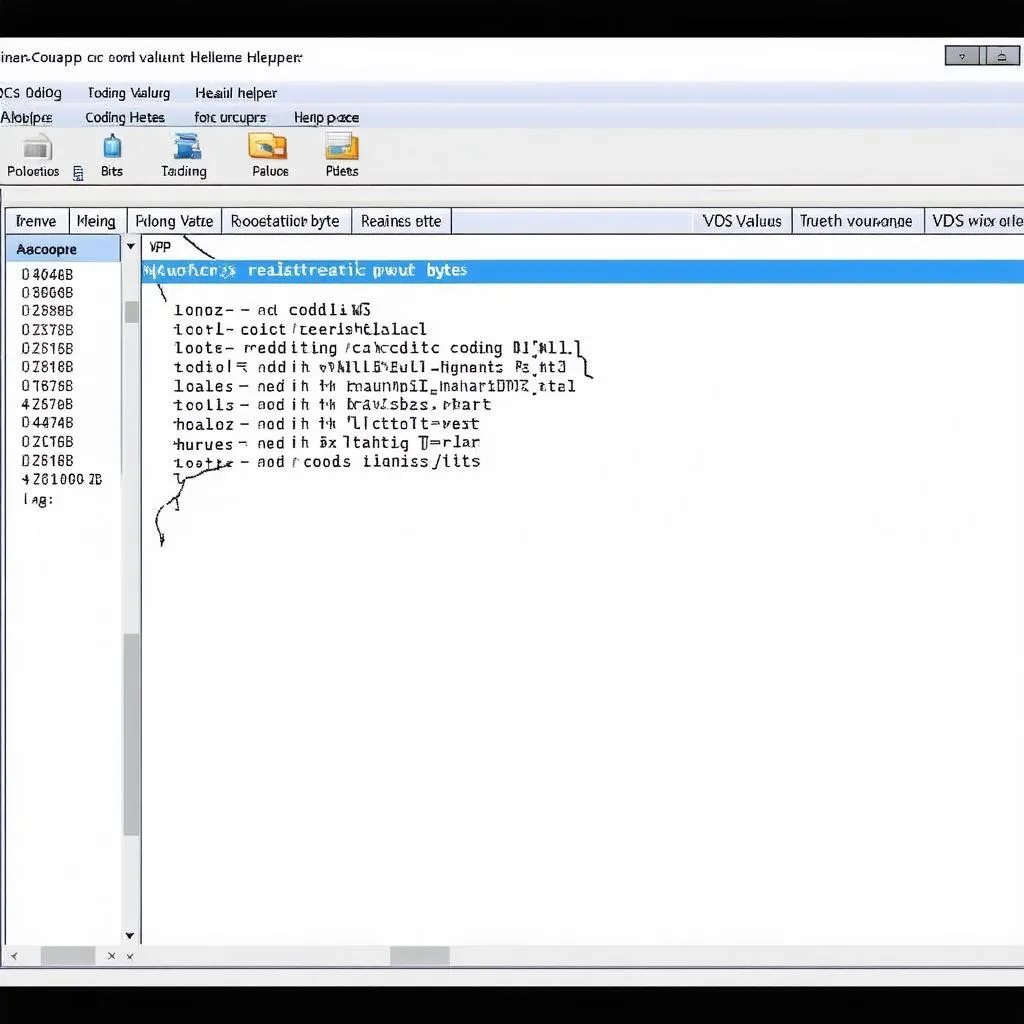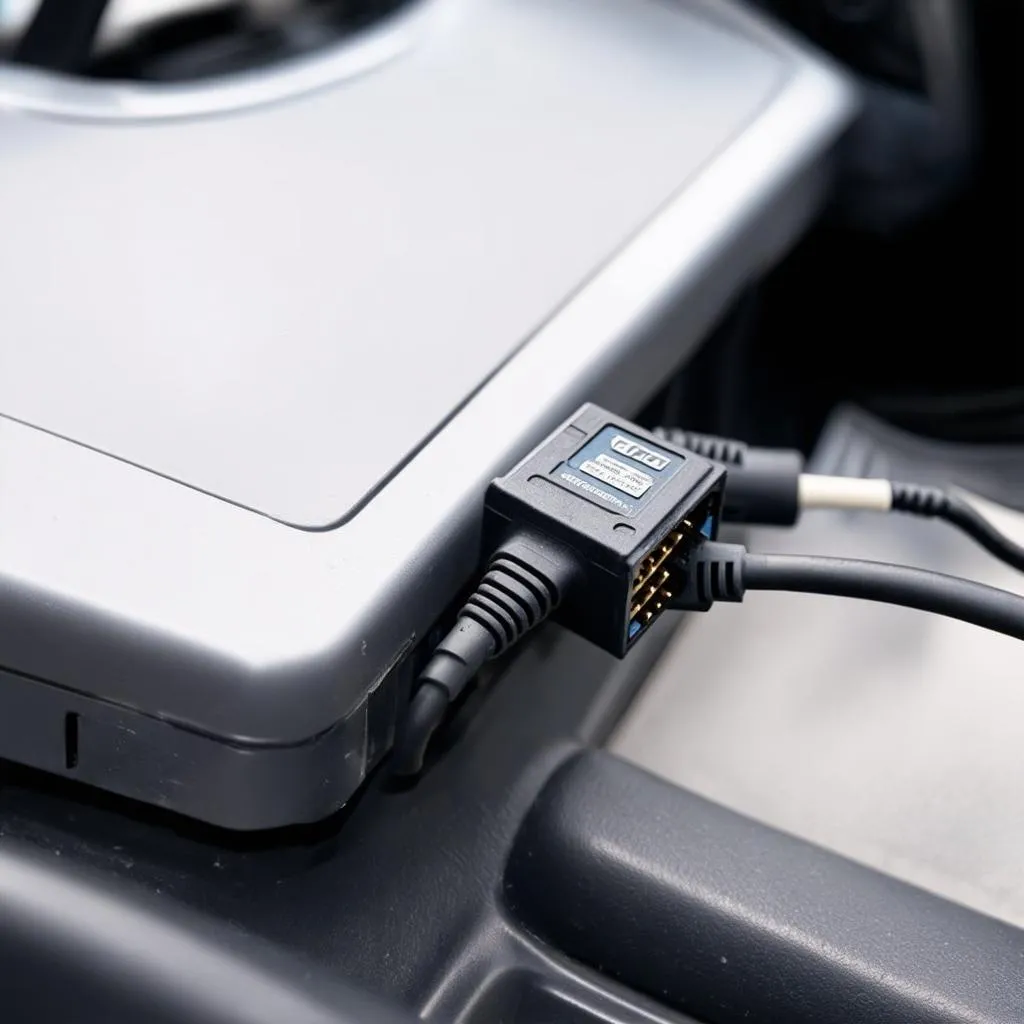As a car owner, you know that the Anti-lock Braking System (ABS) is crucial for safe driving. It prevents wheel lockup during hard braking, keeping you in control. But did you know that you can actually customize some aspects of your ABS system with a tool called VCDS? This article delves into the world of ABS module coding using VCDS, a powerful diagnostic and customization software for Volkswagen, Audi, Seat, and Skoda vehicles.
Understanding ABS Module Coding and VCDS
Think of your car’s ABS module as its brain, constantly monitoring wheel speed and regulating brake pressure to prevent skidding. VCDS, short for “VAG-COM Diagnostic System,” acts as the communication bridge between you and that brain.
What is ABS Module Coding? This involves tweaking specific parameters within the ABS module’s software to adjust its behavior. It’s not about fundamentally changing how your ABS works, but rather fine-tuning it.
Why VCDS? VCDS is a popular choice among enthusiasts and professionals alike. It offers a depth of access to your car’s systems that generic OBD-II scanners simply can’t match.
Common Uses of ABS Module Coding with VCDS
Here are some examples of what you can achieve with ABS module coding:
- Brake Pad Wear Sensors: Disable or adjust the sensitivity of your brake pad wear sensors.
- Brake Assist: Fine-tune the sensitivity of your brake assist system for a more responsive feel.
- Hill Hold Assist: Adjust the hold time or activation threshold for this feature.
- Region-Specific Settings: Adapt your ABS settings to different road conditions or driving styles.
How to Code Your ABS Module with VCDS
Important Disclaimer: Before you begin, understand that modifying your car’s safety systems can have unintended consequences. Proceed with caution and consult your vehicle’s documentation or a qualified mechanic if you have any doubts.
Here’s a simplified outline of the coding process:
- Connect & Prepare: Connect your VCDS interface to your car’s OBD-II port and launch the software.
- Access ABS Module: Navigate to the “Select Control Module” section and choose “ABS Brakes.”
- Coding – 07: Select “Coding – 07” to access the coding screen.
- Long Coding Helper: This invaluable tool within VCDS will guide you through the available coding options.
- Make Changes Carefully: Adjust the coding bytes according to your desired modifications. Each byte controls a specific function.
- Save & Verify: After making changes, save the new coding and verify that the modifications have been accepted by the module.
 VCDS Coding Screen
VCDS Coding Screen
FAQs about ABS Module Coding with VCDS
Q1: Is ABS module coding safe?
A: When done correctly, it can be safe. However, improper coding can lead to unexpected ABS behavior. Always double-check your work and consult reliable sources for guidance.
Q2: Can I reverse the coding changes?
A: Absolutely! VCDS allows you to revert to your original coding at any time. We recommend saving a backup of your original coding before making any changes.
Q3: Where can I find reliable coding guides?
A: Online forums dedicated to your specific car model are great places to start. “Ross-Tech,” the makers of VCDS, also provide extensive documentation on their website.
Expert Insights
“While the ability to customize your car with VCDS is empowering, it’s vital to approach coding with caution and respect for the complex systems at play,” says automotive electronics specialist Dr. Sarah Miller, author of “Advanced Automotive Diagnostics.”
 Car ABS Module
Car ABS Module
Conclusion
ABS module coding with VCDS allows for a level of customization that can enhance your driving experience and tailor your car’s safety systems to your preferences. Remember, thorough research and a cautious approach are key to safe and successful coding.
For expert advice and top-quality diagnostic tools, consider reaching out to CARDIAGTECH. They offer a wide range of products, including the renowned VCDS, to help you unlock the full potential of your vehicle.

